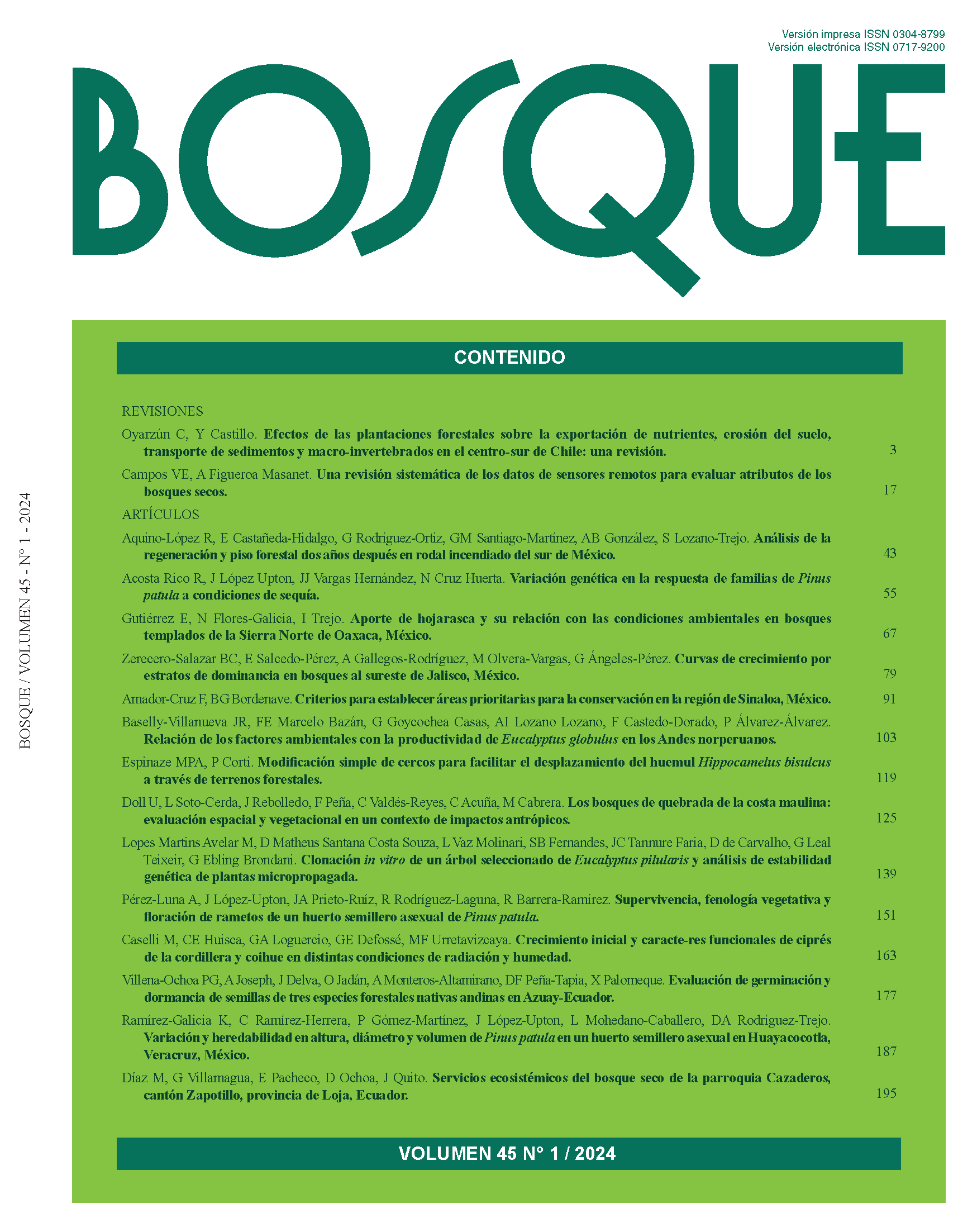Analysis of the regeneration and forest floor in a fired stand at southern Mexico
Main Article Content
Abstract
Temperate pine-oak forests provide multiple ecosystem goods and services; however, they are exposed to a great diversity of natural disturbances, such as forest fires. The objective of this study was to determine the post-fire effect on the residual structure, regeneration and forest floor. In the year 2021, 12 sites were established using selected sampling in three areas with different fire severity conditions (high, medium and low). The tree and forest floor dasometric inventory was carried out to determine and differentiate its biomass stored by NSI, the coordinates (X, Y) of natural regeneration were recorded to determine its spatial distribution. The severity levels were differentiated using the generalized linear model and comparison of means (Duncan, 0.05). Aboveground biomass accumulation (humus and litter, and soil specific gravity) did not show significant differences (P > 0.05) between severity levels (978.26 t ha-1). Sites with high levels of severity have a greater accumulation of necromass (287.91 t ha-1), which makes it difficult to establish natural regeneration. The best-preserved residual tree structure of the burned stand was found in sites with medium severity level since they accumulate biomass amounts of 134.3 t ha-1. In the same sense, these sites with medium severity contain the highest regeneration density (1,237 plants ha-1), which is reduced by up to 79 % in sites with high severity. The distribution of regeneration corresponds to an aggregate pattern across the three levels. The forest presents contiguous positive and negative post-fire changes


 https://orcid.org/0000-0001-5911-9880
https://orcid.org/0000-0001-5911-9880